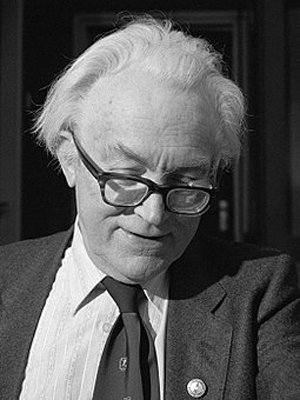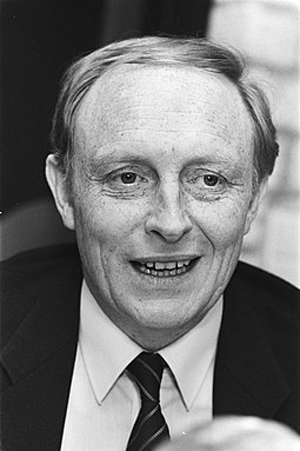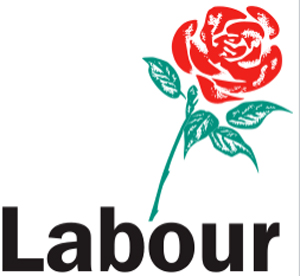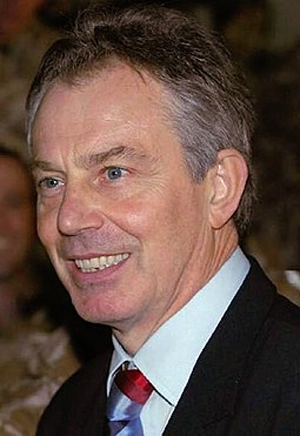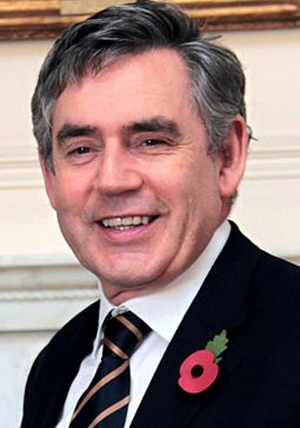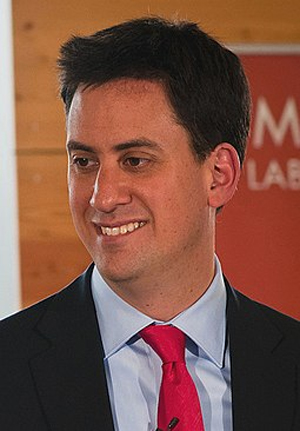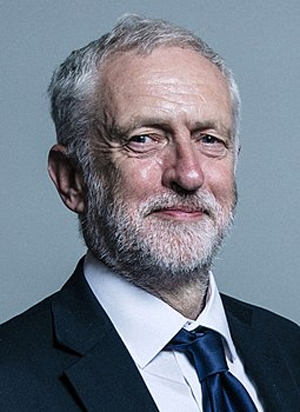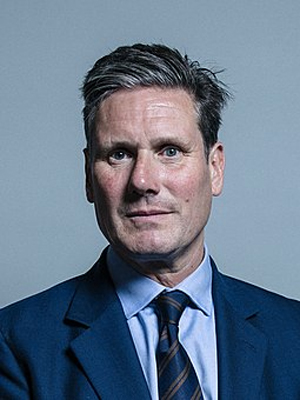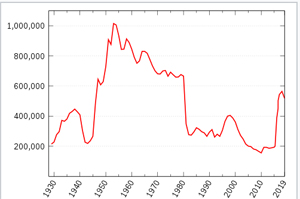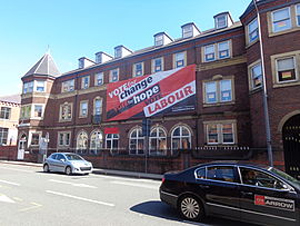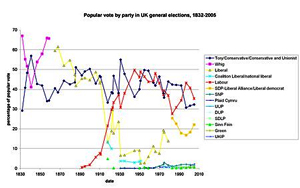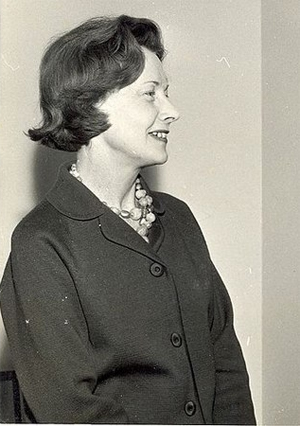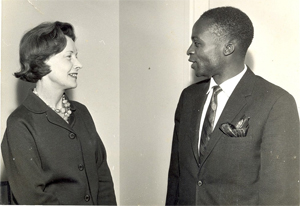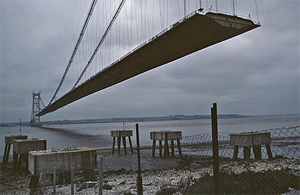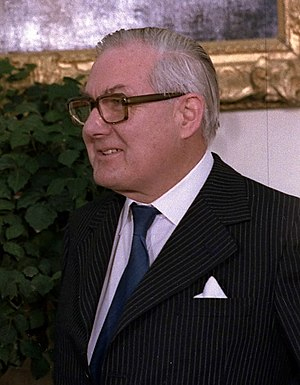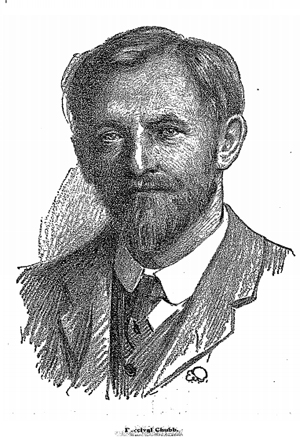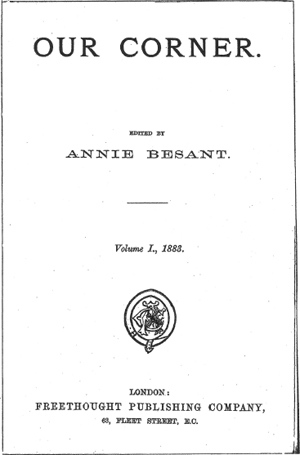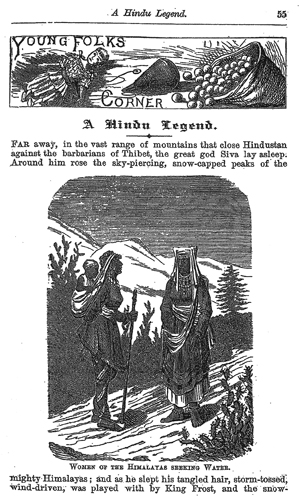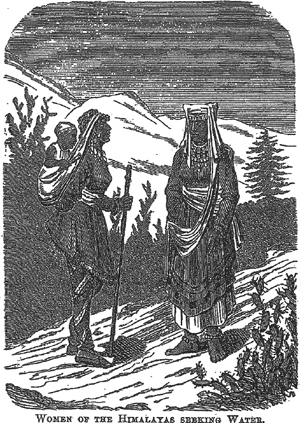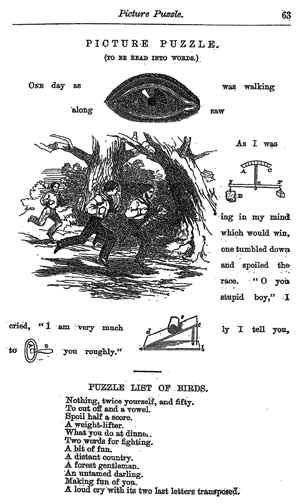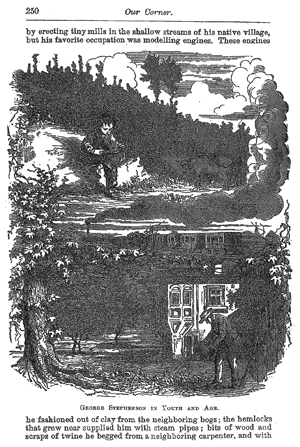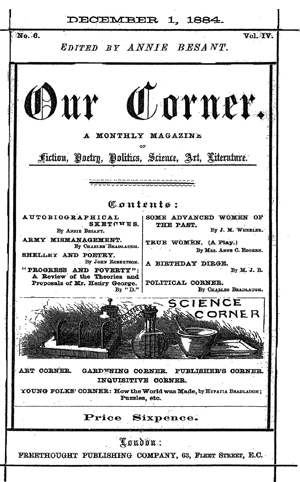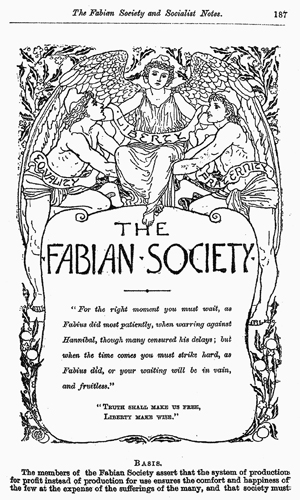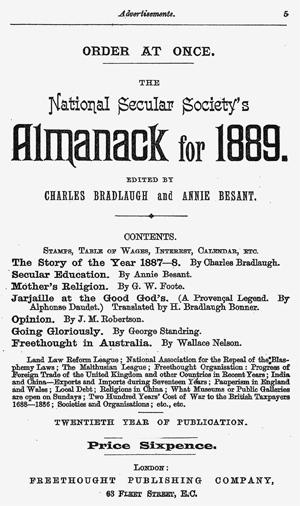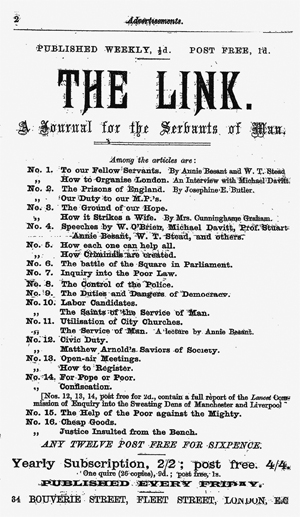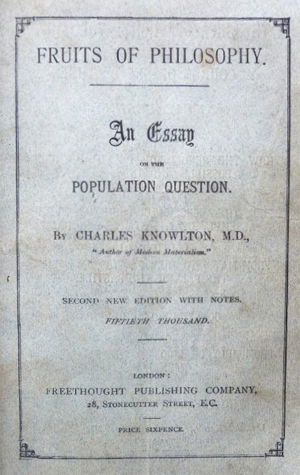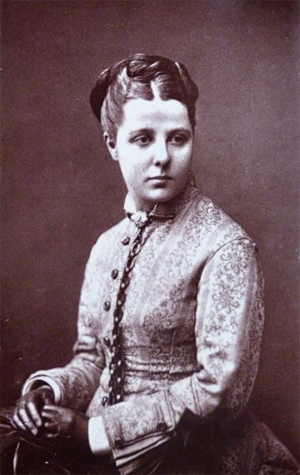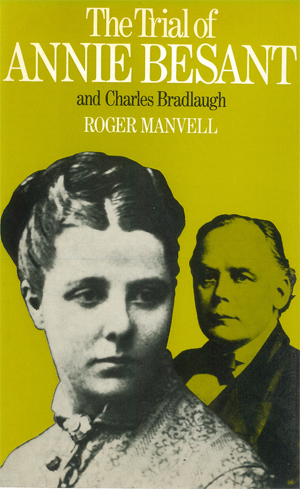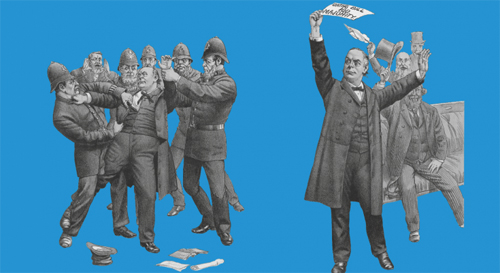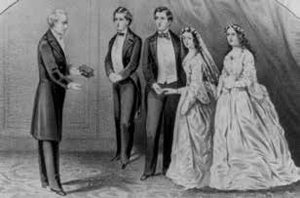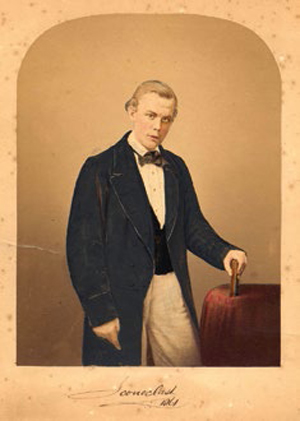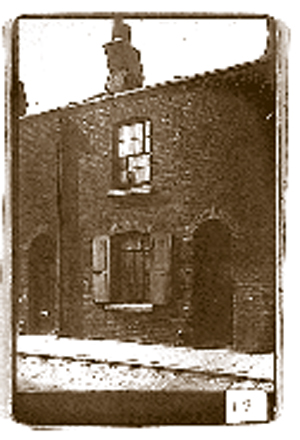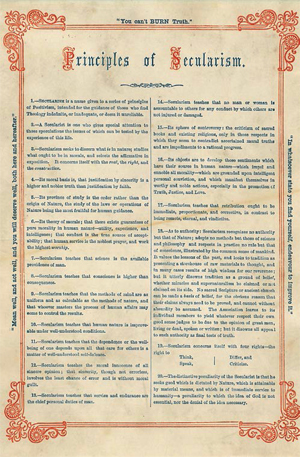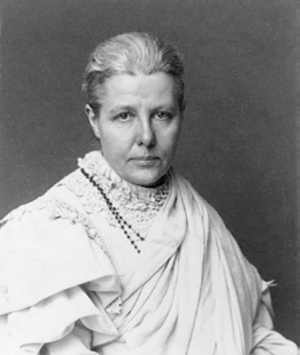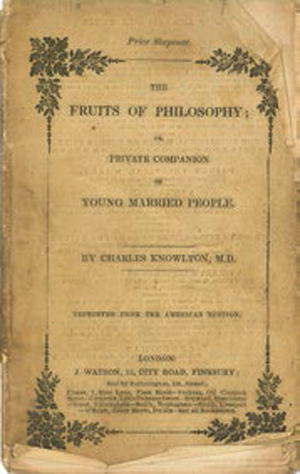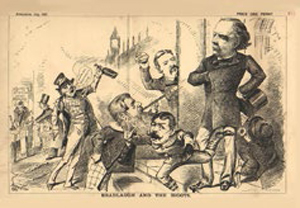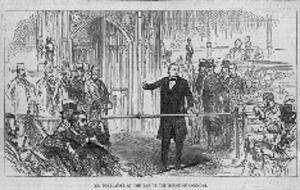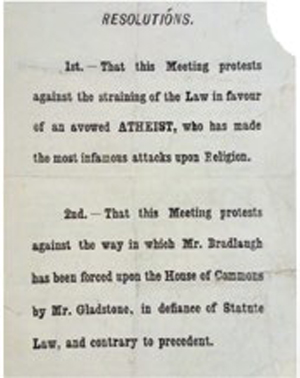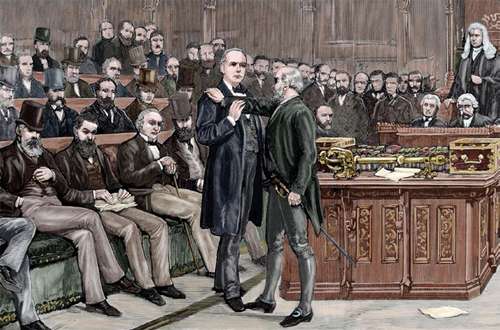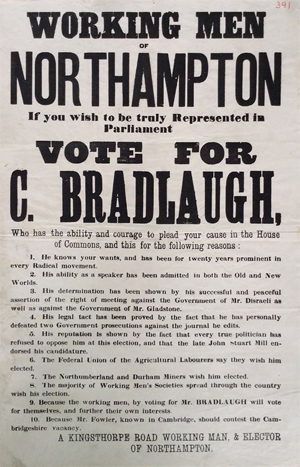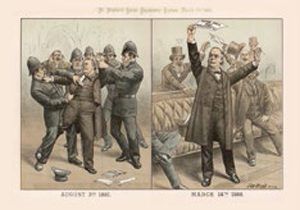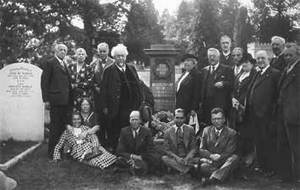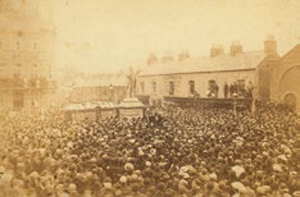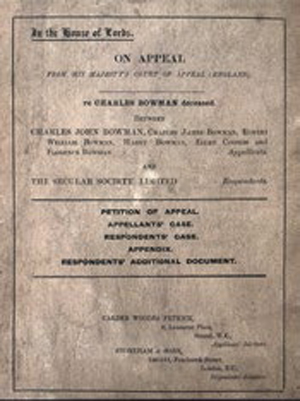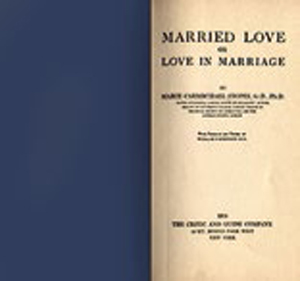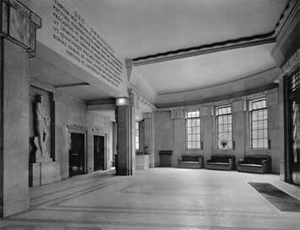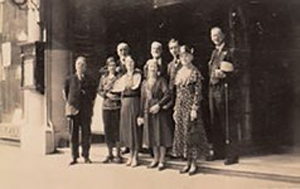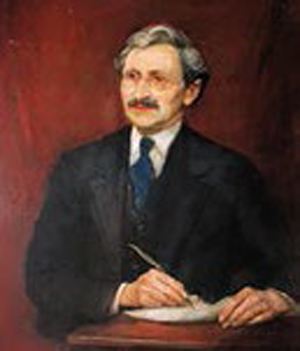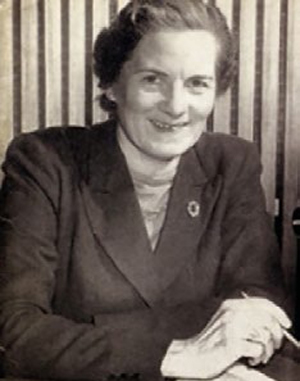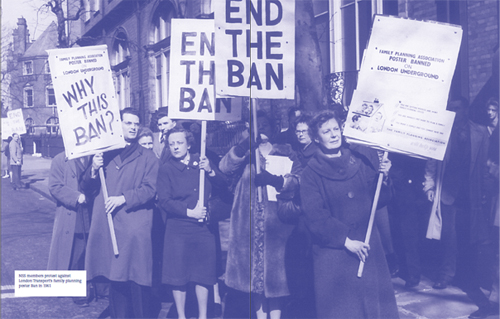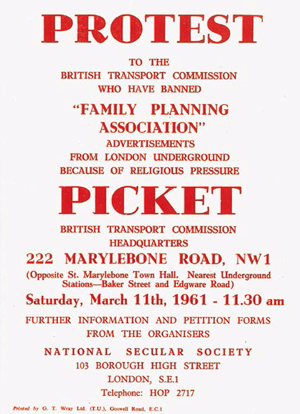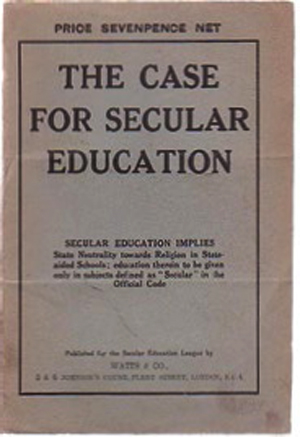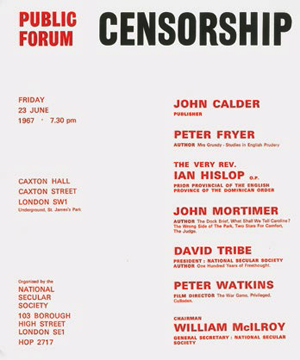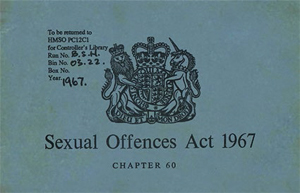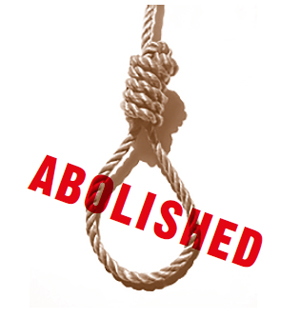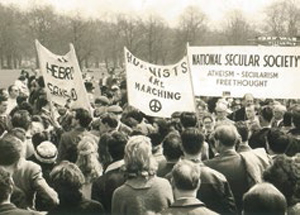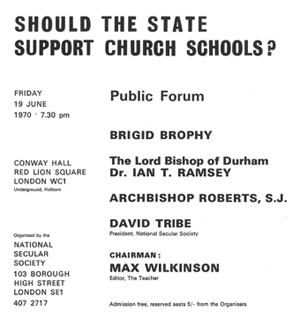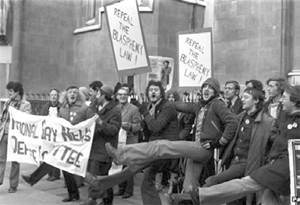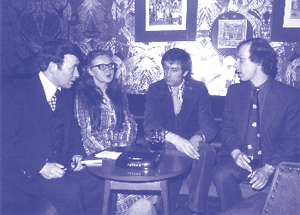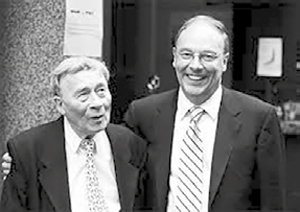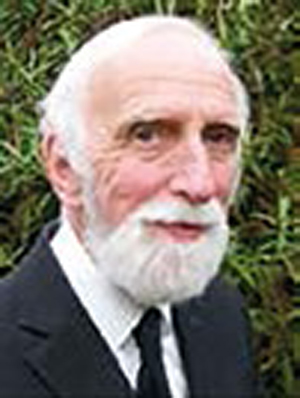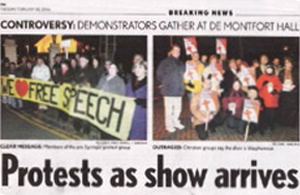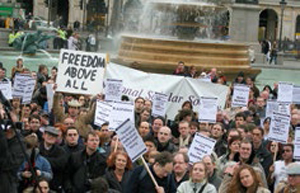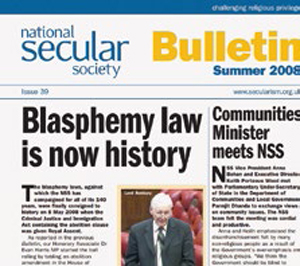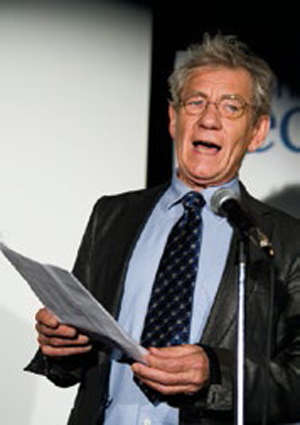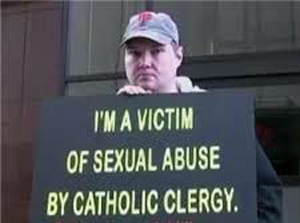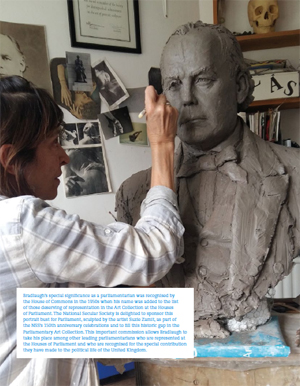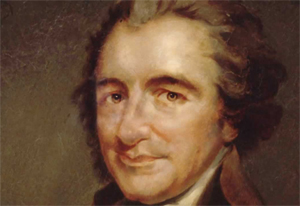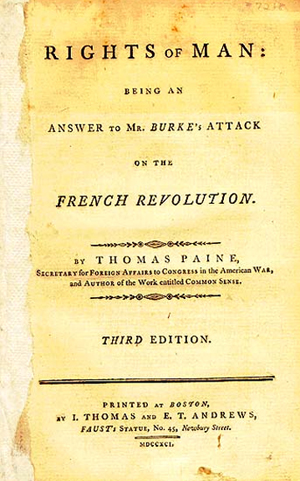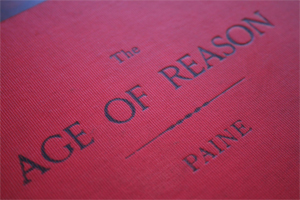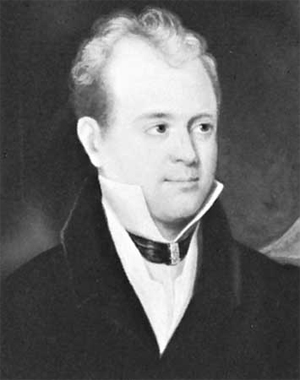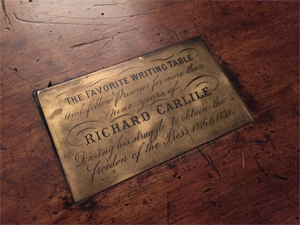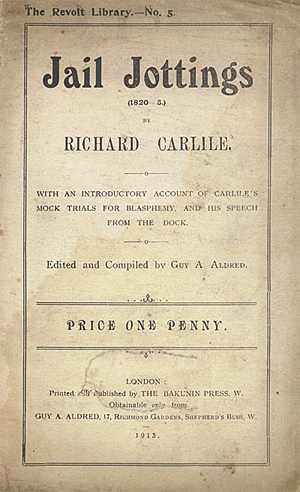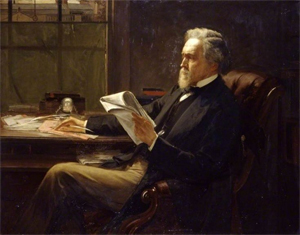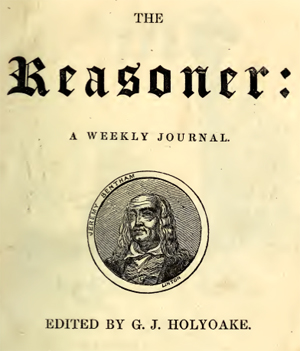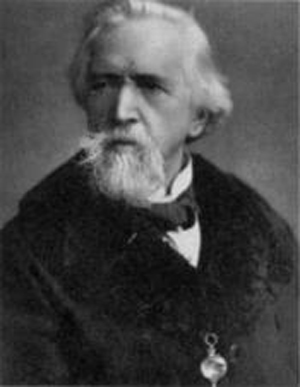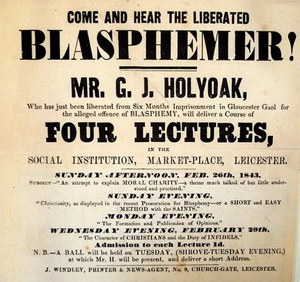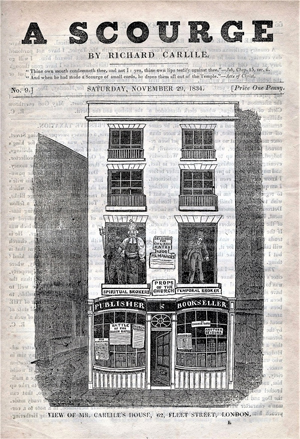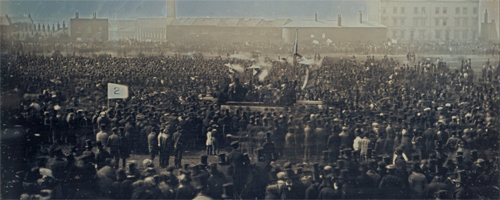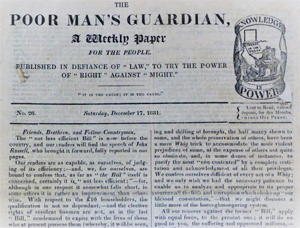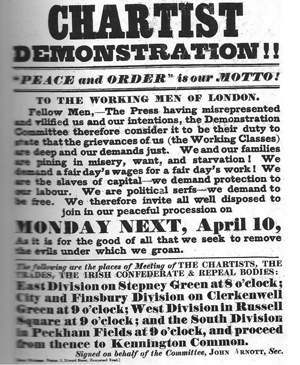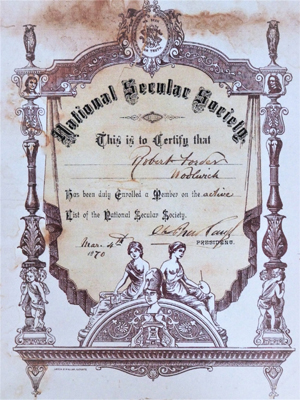Re: Freda Bedi Cont'd (#2)
Part 1 of 3
Labour Party (UK)
by Wikipedia
Accessed: 4/10/20

Labour Party
Leader: Keir Starmer
Deputy Leader: Angela Rayner
General Secretary: Jennie Formby
Lords Leader: Lady Smith
Founded: 27 February 1900; 120 years ago[1][2]
Headquarters: Southside, 105 Victoria Street, London, SW1E 6QT[3]
Youth wing: Young Labour
LGBT wing: LGBT+ Labour
Membership (2020): Increase 580,000[4]
Ideology: Social democracy[5]; Democratic socialism[6]
Political position: Centre-left
European affiliation: Party of European Socialists
International affiliation: Progressive Alliance; Socialist International (observer)
Affiliate parties: Co-operative Party (Labour Co-op); Social Democratic and Labour Party
Colours: Red
Anthem: "The Red Flag"
Governing body: National Executive Committee
Constituting instrument: Labour Party Rule Book (Clause IV)
Devolved or semi-autonomous branches: London Labour; Labour in Northern Ireland; Scottish Labour; Welsh Labour
Parliamentary parties: PLP; Labour Lords
House of Commons[a]: 202 / 650
House of Lords: 176 / 785
London Assembly: 12 / 25
Scottish Parliament: 23 / 129
Welsh Assembly: 29 / 60
Local government[7]: 6,238 / 19,787
Directly elected mayors: 16 / 25
Police and crime commissioners: 15 / 40
Website: labour.org.uk
The Labour Party is a centre-left political party in the United Kingdom that has been described as an alliance of social democrats, democratic socialists and trade unionists.[8] In all general elections since 1922, Labour has been either the governing party or the Official Opposition.
The Labour Party was founded in 1900, having grown out of the trade union movement and socialist parties of the 19th century. It overtook the Liberal Party to become the main opposition to the Conservative Party in the early 1920s, forming two minority governments under Ramsay MacDonald in the 1920s and early 1930s. Labour served in the wartime coalition of 1940–1945, after which Clement Attlee's Labour government established the National Health Service and expanded the welfare state from 1945 to 1951. Under Harold Wilson and James Callaghan, Labour again governed from 1964 to 1970 and 1974 to 1979. In the 1990s, Tony Blair took Labour to the centre as part of his "New Labour" project, which governed the UK under Blair and then Gordon Brown from 1997 to 2010.
The Labour Party currently forms the Official Opposition in the Parliament of the United Kingdom, having won the second-largest number of seats in the 2017 and 2019 general elections. Labour is currently the largest party in the Welsh Assembly, being the main party in the current Welsh government. The party is the third-largest in the Scottish Parliament.
Labour is a member of the Party of European Socialists and Progressive Alliance, and holds observer status in the Socialist International. The party includes semi-autonomous Scottish and Welsh branches, and supports the Social Democratic and Labour Party (SDLP) in Northern Ireland, although it still organises there. As of January 2020, Labour has 580,000 registered members, the largest membership of any party in Europe.[4]
History
Main articles: History of the Labour Party (UK) and History of the socialist movement in the United Kingdom
Founding (1860s–1890s)
The Labour Party originated in the late 19th century, meeting the demand for a new political party to represent the interests and needs of the urban working class, a demographic which had increased in number, and many of whom only gained suffrage with the passage of the Representation of the People Act 1884.[9] Some members of the trades union movement became interested in moving into the political field, and after further extensions of the voting franchise in 1867 and 1885, the Liberal Party endorsed some trade-union sponsored candidates. The first Lib–Lab candidate to stand was George Odger in the Southwark by-election of 1870. In addition, several small socialist groups had formed around this time, with the intention of linking the movement to political policies. Among these were the Independent Labour Party, the intellectual and largely middle-class Fabian Society, the Marxist Social Democratic Federation[10] and the Scottish Labour Party.
At the 1895 general election, the Independent Labour Party put up 28 candidates but won only 44,325 votes. Keir Hardie, the leader of the party, believed that to obtain success in parliamentary elections, it would be necessary to join with other left-wing groups. Hardie's roots as a lay preacher contributed to an ethos in the party which led to the comment by 1950s General Secretary Morgan Phillips that "Socialism in Britain owed more to Methodism than Marx".[11]
Labour Representation Committee (1900–1906)
Main article: Labour Representation Committee (1900)
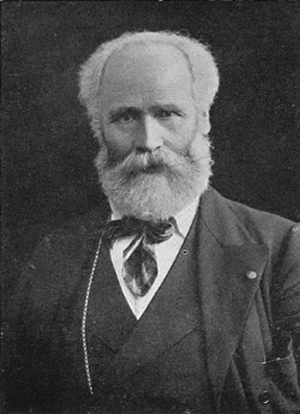
Keir Hardie, one of the Labour Party's founders and its first leader
In 1899, a Doncaster member of the Amalgamated Society of Railway Servants, Thomas R. Steels, proposed in his union branch that the Trade Union Congress call a special conference to bring together all left-wing organisations and form them into a single body that would sponsor Parliamentary candidates. The motion was passed at all stages by the TUC, and the proposed conference was held at the Congregational Memorial Hall on Farringdon Street, London on 26 and 27 February 1900. The meeting was attended by a broad spectrum of working-class and left-wing organisations—trades unions represented about one third of the membership of the TUC delegates.[12]
After a debate, the 129 delegates passed Hardie's motion to establish "a distinct Labour group in Parliament, who shall have their own whips, and agree upon their policy, which must embrace a readiness to cooperate with any party which for the time being may be engaged in promoting legislation in the direct interests of labour."[13] This created an association called the Labour Representation Committee (LRC), meant to co-ordinate attempts to support MPs sponsored by trade unions and represent the working-class population.[2] It had no single leader, and in the absence of one, the Independent Labour Party nominee Ramsay MacDonald was elected as Secretary. He had the difficult task of keeping the various strands of opinions in the LRC united. The October 1900 "Khaki election" came too soon for the new party to campaign effectively; total expenses for the election only came to £33.[14] Only 15 candidatures were sponsored, but two were successful: Keir Hardie in Merthyr Tydfil and Richard Bell in Derby.[15]
Support for the LRC was boosted by the 1901 Taff Vale Case, a dispute between strikers and a railway company that ended with the union being ordered to pay £23,000 damages for a strike. The judgement effectively made strikes illegal, since employers could recoup the cost of lost business from the unions. The apparent acquiescence of the Conservative Government of Arthur Balfour to industrial and business interests (traditionally the allies of the Liberal Party in opposition to the Conservatives' landed interests) intensified support for the LRC against a government that appeared to have little concern for the industrial proletariat and its problems.[15]
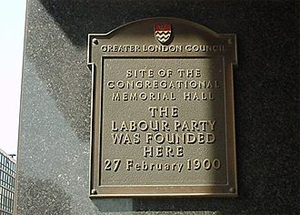
Labour Party Plaque from Caroone House, 14 Farringdon Street
In the 1906 election, the LRC won 29 seats—helped by a secret 1903 pact between Ramsay MacDonald and Liberal Chief Whip Herbert Gladstone that aimed to avoid splitting the opposition vote between Labour and Liberal candidates in the interest of removing the Conservatives from office.[15]
In their first meeting after the election the group's Members of Parliament decided to adopt the name "The Labour Party" formally (15 February 1906). Keir Hardie, who had taken a leading role in getting the party established, was elected as Chairman of the Parliamentary Labour Party (in effect, the leader), although only by one vote over David Shackleton after several ballots. In the party's early years the Independent Labour Party (ILP) provided much of its activist base as the party did not have individual membership until 1918 but operated as a conglomerate of affiliated bodies. The Fabian Society provided much of the intellectual stimulus for the party. One of the first acts of the new Liberal Government was to reverse the Taff Vale judgement.[15]
The People's History Museum in Manchester holds the minutes of the first Labour Party meeting in 1906 and has them on display in the Main Galleries.[16] Also within the museum is the Labour History Archive and Study Centre, which holds the collection of the Labour Party, with material ranging from 1900 to the present day.[17]
Early years (1906–1923)
The December 1910 election saw 42 Labour MPs elected to the House of Commons, a significant victory since, a year before the election, the House of Lords had passed the Osborne judgment ruling that trade union members would have to 'opt in' to sending contributions to Labour, rather than their consent being presumed. The governing Liberals were unwilling to repeal this judicial decision with primary legislation. The height of Liberal compromise was to introduce a wage for Members of Parliament to remove the need to involve the trade unions. By 1913, faced with the opposition of the largest trade unions, the Liberal government passed the Trade Disputes Act to allow unions to fund Labour MPs once more without seeking the express consent of their members.
During the First World War, the Labour Party split between supporters and opponents of the conflict but opposition to the war grew within the party as time went on. Ramsay MacDonald, a notable anti-war campaigner, resigned as leader of the Parliamentary Labour Party and Arthur Henderson became the main figure of authority within the party. He was soon accepted into Prime Minister Asquith's war cabinet, becoming the first Labour Party member to serve in government.
Despite mainstream Labour Party's support for the coalition the Independent Labour Party was instrumental in opposing conscription through organisations such as the Non-Conscription Fellowship while a Labour Party affiliate, the British Socialist Party, organised a number of unofficial strikes.[18]
Arthur Henderson resigned from the Cabinet in 1917 amid calls for party unity to be replaced by George Barnes. The growth in Labour's local activist base and organisation was reflected in the elections following the war, the co-operative movement now providing its own resources to the Co-operative Party after the armistice. The Co-operative Party later reached an electoral agreement with the Labour Party.
At the end of the First World War, the Government was attempting to provide support for the newly re-established Poland against Soviet Russia. Henderson sent telegrams to all local Labour Party organisations to ask them to organise demonstrations against supporting Poland, later forming the Council of Action, to further organise strikes and protests. Due to the number of demonstrations and the potential industrial impact across the country, Churchill and the Government was forced to end support for the Polish war effort.[19]
Henderson turned his attention to building a strong constituency-based support network for the Labour Party. Previously, it had little national organisation, based largely on branches of unions and socialist societies. Working with Ramsay MacDonald and Sidney Webb, Henderson in 1918 established a national network of constituency organisations. They operated separately from trade unions and the National Executive Committee and were open to everyone sympathetic to the party's policies. Secondly, Henderson secured the adoption of a comprehensive statement of party policies, as drafted by Sidney Webb. Entitled "Labour and the New Social Order," it remained the basic Labour platform until 1950. It proclaimed a socialist party whose principles included a guaranteed minimum standard of living for everyone, nationalisation of industry, and heavy taxation of large incomes and of wealth.[20] It was in 1918 that Clause IV, as drafted by Sidney Webb, was adopted into Labour's constitution, committing the party to work towards "the common ownership of the means of production, distribution and exchange."
With the Representation of the People Act 1918, almost all adult men (excepting only peers, criminals and lunatics) and most women over the age of thirty were given the right to vote, almost tripling the British electorate at a stroke, from 7.7 million in 1912 to 21.4 million in 1918. This set the scene for a surge in Labour representation in parliament.[21] The Communist Party of Great Britain was refused affiliation to the Labour Party between 1921 and 1923.[22]
Meanwhile, the Liberal Party declined rapidly, and the party also suffered a catastrophic split which allowed the Labour Party to gain much of the Liberals' support.[23] With the Liberals thus in disarray, Labour won 142 seats in 1922, making it the second largest political group in the House of Commons and the official opposition to the Conservative government. After the election Ramsay MacDonald was voted the first official leader of the Labour Party.
First Labour government and period in opposition (1923–1929)
Main article: First MacDonald ministry
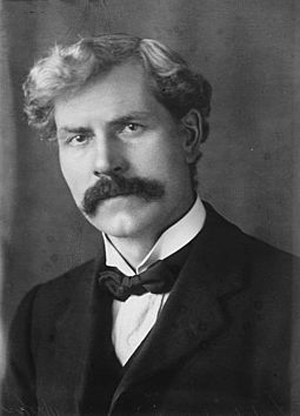
Ramsay MacDonald, first Labour Prime Minister (1924 and 1929–1931)
The 1923 general election was fought on the Conservatives' protectionist proposals but, although they got the most votes and remained the largest party, they lost their majority in parliament, necessitating the formation of a government supporting free trade. Thus, with the acquiescence of Asquith's Liberals, Ramsay MacDonald became the first ever Labour Prime Minister in January 1924, forming the first Labour government, despite Labour only having 191 MPs (less than a third of the House of Commons).
The most significant achievement of the first Labour government was the Wheatley Housing Act, which began a building programme of 500,000 municipal houses for rental to low paid workers. Legislation on education, unemployment, social insurance and tenant protection was also passed. However, because the government had to rely on the support of the Liberals it was unable to implement many of its more contentious policies such as nationalisation of the coal industry, or a capital levy. Although no radical changes were introduced, Labour demonstrating that they were capable of governing.[24]
While there were no major labour strikes during his term, MacDonald acted swiftly to end those that did erupt. When the Labour Party executive criticised the government, he replied that, "public doles, Poplarism [local defiance of the national government], strikes for increased wages, limitation of output, not only are not Socialism, but may mislead the spirit and policy of the Socialist movement."[25]
The government collapsed after only ten months when the Liberals voted for a Select Committee inquiry into the Campbell Case, a vote which MacDonald had declared to be a vote of confidence. The ensuing 1924 general election saw the publication, four days before polling day, of the forged Zinoviev letter, in which Moscow talked about a Communist revolution in Britain. The letter had little impact on the Labour vote—which held up. It was the collapse of the Liberal party that led to the Conservative landslide. The Conservatives were returned to power although Labour increased its vote from 30.7% to a third of the popular vote, most Conservative gains being at the expense of the Liberals. However, many Labourites blamed for years their defeat on foul play (the Zinoviev letter), thereby according to A. J. P. Taylor misunderstanding the political forces at work and delaying needed reforms in the party.[26][27]
In opposition MacDonald continued his policy of presenting the Labour Party as a moderate force. During the General Strike of 1926 the party opposed the general strike, arguing that the best way to achieve social reforms was through the ballot box. The leaders were also fearful of Communist influence orchestrated from Moscow.[28]
The party had a distinctive and suspicious foreign policy based on pacifism. Its leaders believed that peace was impossible because of capitalism, secret diplomacy, and the trade in armaments. That is it stressed material factors that ignored the psychological memories of the Great War, and the highly emotional tensions regarding nationalism and the boundaries of the countries.[29][30]
Second Labour government (1929–1931)
Main article: Second MacDonald ministry
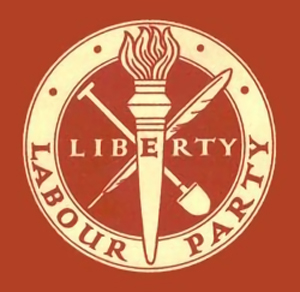
The original Liberty logo, in use until 1983
In the 1929 general election, the Labour Party became the largest in the House of Commons for the first time, with 287 seats and 37.1% of the popular vote. However MacDonald was still reliant on Liberal support to form a minority government. MacDonald went on to appoint Britain's first woman cabinet minister; Margaret Bondfield, who was appointed Minister of Labour.[31]
MacDonald's second government was in a stronger parliamentary position than his first, and in 1930 Labour was able to pass legislation to raise unemployment pay, improve wages and conditions in the coal industry (i.e. the issues behind the General Strike) and pass a housing act which focused on slum clearances.[32]
The government, however, soon found itself engulfed in crisis: the Wall Street Crash of 1929 and eventual Great Depression occurred soon after the government came to power, and the slump in global trade hit Britain hard. By the end of 1930 unemployment had doubled to over two and a half million.[33] The government had no effective answers to the deteriorating financial situation, and by 1931 there was much fear that the budget was unbalanced, which was born out by the independent May Report which triggered a confidence crisis and a run on the pound. The cabinet deadlocked over its response, with several influential members unwilling to support the budget cuts (in particular a cut in the rate of unemployment benefit) which were pressed by the civil service and opposition parties. Chancellor of the Exchequer Philip Snowden refused to consider deficit spending or tariffs as alternative solutions. When a final vote was taken, the Cabinet was split 11–9 with a minority, including many political heavyweights such as Arthur Henderson and George Lansbury, threatening to resign rather than agree to the cuts. The unworkable split, on 24 August 1931, made the government resign. MacDonald was encouraged by King George V to form an all-party National Government to deal with the immediate crisis.[34][35]
The financial crisis grew worse and decisive government action was needed as the leaders of both the Conservative and Liberal Parties met with King George V, and MacDonald, at first to discuss support for the spending cuts but later to discuss the shape of the next government. The king played the central role in demanding a National government be formed. On 24 August, MacDonald agreed to form a National Government composed of men from all parties with the specific aim of balancing the Budget and restoring confidence. The new cabinet had four Labourites (who formed a "National Labour" group) who stood with MacDonald, plus four Conservatives (led by Baldwin, Chamberlain) and two Liberals. MacDonald's moves aroused great anger among a large majority of Labour Party activists who felt betrayed. Labour unions were strongly opposed and the Labour Party officially repudiated the new National government. It expelled MacDonald and his supporters and made Henderson the leader of the main Labour party. Henderson led it into the general election on 27 October against the three-party National coalition. It was a disaster for Labour, which was reduced to a small minority of 52 seats. The Conservative-dominated National Government, led by MacDonald won the largest landslide in British political history.[36]
In 1931, Labour campaigned on opposition to public spending cuts, but found it difficult to defend the record of the party's former government and the fact that most of the cuts had been agreed before it fell. Historian Andrew Thorpe argues that Labour lost credibility by 1931 as unemployment soared, especially in coal, textiles, shipbuilding, and steel. The working class increasingly lost confidence in the ability of Labour to solve the most pressing problem.[37]
The 2.5 million Irish Catholics in England and Scotland were a major factor in the Labour base in many industrial areas. The Catholic Church had previously tolerated the Labour Party, and denied that it represented true socialism. However, the bishops by 1930 had grown increasingly alarmed at Labour's policies toward Communist Russia, toward birth control and especially toward funding Catholic schools. They warned its members. The Catholic shift against Labour and in favour of the National government played a major role in Labour's losses.[38]
Labour in opposition (1931–1940)
Arthur Henderson, elected in 1931 to succeed MacDonald, lost his seat in the 1931 general election. The only former Labour cabinet member who had retained his seat, the pacifist George Lansbury, accordingly became party leader.
The party experienced another split in 1932 when the Independent Labour Party, which for some years had been increasingly at odds with the Labour leadership, opted to disaffiliate from the Labour Party and embarked on a long, drawn-out decline.
Lansbury resigned as leader in 1935 after public disagreements over foreign policy. He was promptly replaced as leader by his deputy, Clement Attlee, who would lead the party for two decades. The party experienced a revival in the 1935 general election, winning 154 seats and 38% of the popular vote, the highest that Labour had achieved.[39]
As the threat from Nazi Germany increased, in the late 1930s the Labour Party gradually abandoned its pacifist stance and came to support re-armament, largely due to the efforts of Ernest Bevin and Hugh Dalton who by 1937 had also persuaded the party to oppose Neville Chamberlain's policy of appeasement.[33]
Wartime coalition (1940–1945)
See also: Churchill war ministry
The party returned to government in 1940 as part of the wartime coalition. When Neville Chamberlain resigned in the spring of 1940, incoming Prime Minister Winston Churchill decided to bring the other main parties into a coalition similar to that of the First World War. Clement Attlee was appointed Lord Privy Seal and a member of the war cabinet, eventually becoming the United Kingdom's first Deputy Prime Minister.
A number of other senior Labour figures also took up senior positions: the trade union leader Ernest Bevin, as Minister of Labour, directed Britain's wartime economy and allocation of manpower, the veteran Labour statesman Herbert Morrison became Home Secretary, Hugh Dalton was Minister of Economic Warfare and later President of the Board of Trade, while A. V. Alexander resumed the role he had held in the previous Labour Government as First Lord of the Admiralty.
Attlee government (1945–1951)
Main article: Attlee ministry
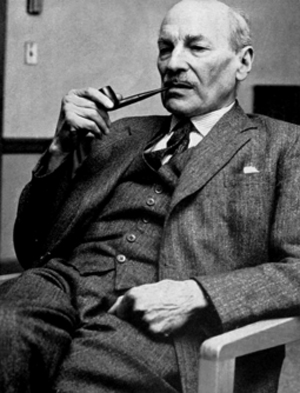
Clement Attlee, Prime Minister (1945–1951)
At the end of the war in Europe, in May 1945, Labour resolved not to repeat the Liberals' error of 1918, and promptly withdrew from government, on trade union insistence, to contest the 1945 general election in opposition to Churchill's Conservatives. Surprising many observers,[40] Labour won a landslide victory, winning just under 50% of the vote with a majority of 159 seats.[41]
Although Clement Attlee was no great radical himself,[citation needed] Attlee's government proved one of the most radical British governments of the 20th century, enacting Keynesian economic policies, presiding over a policy of nationalising major industries and utilities including the Bank of England, coal mining, the steel industry, electricity, gas, and inland transport (including railways, road haulage and canals). It developed and implemented the "cradle to grave" welfare state conceived by the economist William Beveridge.[42][43][44] To this day, most people in the United Kingdom see the 1948 creation of Britain's National Health Service (NHS) under health minister Aneurin Bevan, which gave publicly funded medical treatment for all, as Labour's proudest achievement.[45] Attlee's government also began the process of dismantling the British Empire when it granted independence to India and Pakistan in 1947, followed by Burma (Myanmar) and Ceylon (Sri Lanka) the following year. At a secret meeting in January 1947, Attlee and six cabinet ministers, including Foreign Secretary Ernest Bevin, decided to proceed with the development of Britain's nuclear weapons programme,[33] in opposition to the pacifist and anti-nuclear stances of a large element inside the Labour Party.
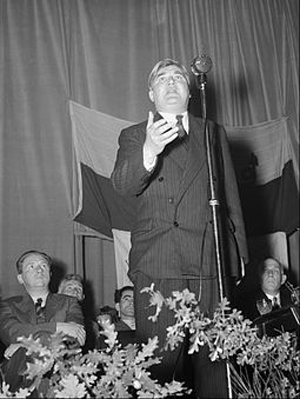
Aneurin Bevan speaking in October 1952
Labour went on to win the 1950 general election, but with a much-reduced majority of five seats. Soon afterwards, defence became a divisive issue within the party, especially defence spending (which reached a peak of 14% of GDP in 1951 during the Korean War),[46] straining public finances and forcing savings elsewhere. The Chancellor of the Exchequer, Hugh Gaitskell, introduced charges for NHS dentures and spectacles, causing Bevan, along with Harold Wilson (then President of the Board of Trade), to resign over the dilution of the principle of free treatment on which the NHS had been established.
In the 1951 general election, Labour narrowly lost to Churchill's Conservatives, despite receiving the larger share of the popular vote – its highest ever vote numerically. Most of the changes introduced by the 1945–51 Labour government were accepted by the Conservatives and became part of the "post-war consensus" that lasted until the late 1970s. Food and clothing rationing, however, still in place since the war, were swiftly relaxed, then abandoned from about 1953.[47]
Post-war consensus (1951–1964)
Following the defeat of 1951, the party spent 13 years in opposition. The party suffered an ideological split, between the party's left-wing followers of Aneurin Bevan (known as Bevanites), and the right-wing of the party following Hugh Gaitskell (known as Gaitskellites) while the postwar economic recovery and the social effects of Attlee's reforms made the public broadly content with the Conservative governments of the time. The ageing Attlee contested his final general election in 1955, which saw Labour lose ground, and he retired shortly after.
Under his replacement, Hugh Gaitskell, Labour appeared more united than before and had been widely expected to win the 1959 general election, but did not. Following this internal party infighting resumed, particularly over the issues of nuclear disarmament, Britain's entry into the European Economic Community (EEC) and Clause IV of the Labour Party Constitution, which was viewed as Labour's commitment to nationalisation which Gaitskell wanted scrapped. These issues would continue to divide the party for decades to come.[48][49]
Gaitskell died suddenly in 1963, and this made way for Harold Wilson to lead the party.
Wilson government (1964–1970)
Main article: First Wilson ministry
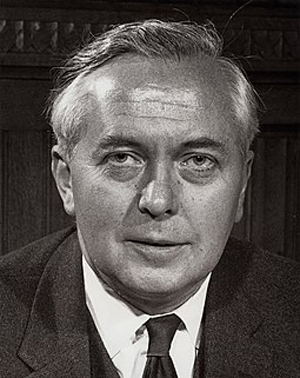
Harold Wilson, Prime Minister (1964–1970 and 1974–1976)
A downturn in the economy and a series of scandals in the early 1960s (the most notorious being the Profumo affair) had engulfed the Conservative government by 1963. The Labour Party returned to government with a 4-seat majority under Wilson in the 1964 general election but increased its majority to 96 in the 1966 general election.
Wilson's government was responsible for a number of sweeping social and educational reforms under the leadership of Home Secretary Roy Jenkins such as the abolishment of the death penalty in 1964, the legalisation of abortion and homosexuality (initially only for men aged 21 or over, and only in England and Wales) in 1967 and the abolition of theatre censorship in 1968. Wilson's government also put heavy emphasis on expanding opportunities through education, and as such, comprehensive education was expanded and the Open University created.
Wilson's first period as Prime Minister coincided with a period of relatively low unemployment and economic prosperity, it was however hindered by significant problems with a large trade deficit which it had inherited from the previous government. The first three years of the government were spent in an ultimately doomed attempt to stave off devaluation of the pound. Labour went on to unexpectedly lose the 1970 general election to the Conservatives under Edward Heath.
Spell in opposition (1970–1974)
After losing the 1970 general election, Labour returned to opposition, but retained Harold Wilson as Leader. Heath's government soon ran into trouble over Northern Ireland and a dispute with miners in 1973 which led to the "three-day week". The 1970s proved a difficult time to be in government for both the Conservatives and Labour due to the 1973 oil crisis which caused high inflation and a global recession.
The Labour Party was returned to power again under Wilson a few weeks after the February 1974 general election, forming a minority government with the support of the Ulster Unionists. The Conservatives were unable to form a government alone as they had fewer seats despite receiving more votes numerically. It was the first general election since 1924 in which both main parties had received less than 40% of the popular vote and the first of six successive general elections in which Labour failed to reach 40% of the popular vote. In a bid to gain a majority, a second election was soon called for October 1974 in which Labour, still with Harold Wilson as leader, won a slim majority of three, gaining just 18 seats taking its total to 319.
Majority to minority (1974–1979)
Main article: Labour Government 1974–79
For much of its time in office the Labour government struggled with serious economic problems and a precarious majority in the Commons, while the party's internal dissent over Britain's membership of the European Economic Community, which Britain had entered under Edward Heath in 1972, led in 1975 to a national referendum on the issue in which two thirds of the public supported continued membership.
Harold Wilson's personal popularity remained reasonably high but he unexpectedly resigned as Prime Minister in 1976 citing health reasons, and was replaced by James Callaghan. The Wilson and Callaghan governments of the 1970s tried to control inflation (which reached 23.7% in 1975[50]) by a policy of wage restraint. This was fairly successful, reducing inflation to 7.4% by 1978.[15][50] However it led to increasingly strained relations between the government and the trade unions.
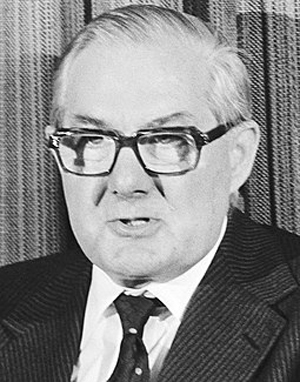
James Callaghan, Prime Minister (1976–1979)
Fear of advances by the nationalist parties, particularly in Scotland, led to the suppression of a report from Scottish Office economist Gavin McCrone that suggested that an independent Scotland would be "chronically in surplus".[51] By 1977 by-election losses and defections to the breakaway Scottish Labour Party left Callaghan heading a minority government, forced to do deals with smaller parties in order to govern. An arrangement negotiated in 1977 with Liberal leader David Steel, known as the Lib–Lab pact, ended after one year. Deals were then forged with various small parties including the Scottish National Party (SNP) and the Welsh nationalist Plaid Cymru, prolonging the life of the government.
The nationalist parties, in turn, demanded devolution to their respective constituent countries in return for their supporting the government. When referendums for Scottish and Welsh devolution were held in March 1979 the Welsh devolution referendum saw a large majority vote against, while the Scottish referendum returned a narrow majority in favour without reaching the required threshold of 40% support. When the Labour government duly refused to push ahead with setting up the proposed Scottish Assembly, the SNP withdrew its support for the government: this finally brought the government down as the Conservatives triggered a vote of confidence in Callaghan's government that was lost by a single vote on 28 March 1979, necessitating a general election.
By 1978, the economy had started to show signs of recovery, with inflation falling to single digits, unemployment falling, and living standards starting to rise during the year.[52] Labour's opinion poll ratings also improved, with most showing the party to be in the lead.[15] Callaghan had been widely expected to call a general election in the autumn of 1978 to take advantage of the improving situation. In the event, he decided to gamble that extending the wage restraint policy for another year would allow the economy to be in better shape for a 1979 election. However this proved unpopular with the trade unions, and during the winter of 1978–79 there were widespread strikes among lorry drivers, railway workers, car workers and local government and hospital workers in favour of higher pay-rises that caused significant disruption to everyday life. These events came to be dubbed the "Winter of Discontent".
These industrial disputes sent the Conservatives now led by Margaret Thatcher into the lead in the polls, which led to Labour's defeat in the 1979 general election. The Labour vote held up in the election, with the party receiving nearly the same number of votes than in 1974. However, the Conservative Party achieved big increases in support in the Midlands and South of England, benefiting from both a surge in turnout and votes lost by the ailing Liberals.
Labour Party (UK)
by Wikipedia
Accessed: 4/10/20
Thomas Davidson was the occasion rather than the cause of the founding of the Fabian Society. His socialism was ethical and individual rather than economic and political. He was spiritually a descendant of the Utopians of Brook Farm and the Phalanstery, and what he yearned for was something in the nature of a community of superior people withdrawn from the world because of its wickedness, and showing by example how a higher life might be led. Probably his Scotch common sense recoiled from definitely taking the plunge: I am not aware that he ever actually proposed that his disciples should form a self-contained community. In a lecture to the New York Fellowship of the New Life, he said, "I shall set out with two assumptions, first, that human life does not consist in material possession; and second, that it does consist in free spiritual activity, of which in this life at least material possession is an essential condition." There is nothing new in this: it is the common basis of all religions and ethical systems. But it needs to be re-stated for each generation, and so stated as to suit each environment. At the time that I am describing Davidson's re-statement appealed to the small circle of his adherents, though the movement which he started had results that he neither expected nor approved....
In the autumn of 1883 Thomas Davidson paid a short visit to London and held several little meetings of young people, to whom he expounded his ideas of a Vita Nuova, a Fellowship of the New Life. I attended the last of these meetings held in a bare room somewhere in Chelsea, on the invitation of Frank Podmore, whose acquaintance I had made a short time previously. We had become friends through a common interest first in Spiritualism and subsequently in Psychical Research, and it was whilst vainly watching for a ghost in a haunted house at Notting Hill—the house was unoccupied: we had obtained the key from the agent, left the door unlatched, and returned late at night in the foolish hope that we might perceive something abnormal—that he first discussed with me the teachings of Henry George in "Progress and Poverty," and we found a common interest in social as well as psychical progress.
The English organiser or secretary of the still unformed Davidsonian Fellowship was Percival Chubb, then a young clerk in the Local Government Board, and subsequently a lecturer and head of an Ethical Church in New York and St. Louis. Thomas Davidson was about to leave London; and the company he had gathered round him, desirous of further discussing his suggestions, decided to hold another meeting at my rooms. I was at that time a member of the Stock Exchange and lived in lodgings furnished by myself.
Here then on October 24th, 1883, was held the first of the fortnightly meetings, which have been continued with scarcely a break, through nine months of every year, up to the present time. The company that assembled consisted in part of the Davidsonian circle and in part of friends of my own....
A few words may be devoted to the Fellowship of the New Life, which continued to exist for fifteen years. Its chief achievement was the publication of a quarterly paper called "Seedtime," issued from July, 1889, to February, 1898. The paper contains articles on Ethical Socialism, the Simple Life, Humanitarianism, the Education of Children, and similar subjects. The Society was conducted much on the same lines as the Fabian Society: fortnightly lectures were given in London and reported in "Seedtime."
In 1893 we find in "Seedtime" an Annual Report recording 12 public meetings, 4 social gatherings, a membership of 95, and receipts £73. During this year, 1892-3, [url]J. Ramsay Macdonald[/url], subsequently M.P. and Secretary and Chairman of the Labour Party, was Honorary Secretary, and for some years he was on the Executive....
The future success of the Society was dependent in the main on two factors then already in existence. The first was its foundation before there was any other definitely Socialist body in England. The Social Democratic Federation did not adopt that name until August, 1884; the Fabian Society can therefore claim technical priority, and consequently it has never had to seek acceptance by the rest of the Socialist movement. At any later date it would have been impossible for a relatively small middle-class society to obtain recognition as an acknowledged member of the Socialist confraternity. We were thus in a position to welcome the formation of working-class Socialist societies, but it is certain that in the early days they would never have welcomed us....
The Social Democrats of those days asserted that unquestioning belief in every dogma attributed to Marx was essential to social salvation, and that its only way was revolution, by which they meant, not the complete transformation of society, but its transformation by means of rifles and barricades; they were convinced that a successful repetition of the Commune of Paris was the only method by which their policy could prevail. The Fabians realised from the first that no such revolution was likely to take place, and that constant talk about it was the worst possible way to commend Socialism to the British working class. And indeed a few years later it was necessary to establish a new working-class Socialist Society, the Independent Labour Party, in order to get clear both of the tradition of revolutionary violence and of the vain repetition of Marxian formulas. If the smaller society had merged itself in the popular movement, its criticism, necessary as it proved to be to the success of Socialism in England, would have been voted down, and its critics either silenced or expelled....
A fortnight later the "Lancashire campaign" was planned. It was thoroughly organised. An advanced agent was sent down, and abstracts of lectures were prepared and printed to facilitate accurate reports in the press. Complete lists of the forthcoming lectures—dates, places, subjects, and lecturers—were printed. All the Essayists except Olivier took part, and in addition Robert E. Dell, W.S. De Mattos, and the Rev. Stewart Headlam. An account of the Society written by Bernard Shaw was reprinted from the "Scottish Leader" for September 4th, 1890, for the use of the audience and the Press....
The lectures were given chiefly in sets of four in consecutive weeks, mostly at Liberal and Radical Clubs: others were arranged by Co-operative Societies, and by branches of the S.D.F. and the Socialist League. The subjects were "Socialism," "Where Liberalism Fails," "Co-operation and Labour," "The Future of Women," "The Eight Hours Bill," "The Politics of Labour," and so on. Those arranged by Co-operative Societies were, we are told, the least successful, but it is hoped "that they will bring about a better feeling between Socialists and Co-operators," a state of things which on the side of the Socialists was, as we have previously indicated, badly wanted. It should be noted that much of the success of the campaign was due to friendly assistance from the head-quarters of the Co-operative Union and the National Reform Union.
There is no doubt that this campaign with the series of lectures on the same lines which were continued for several years was an event of some importance, not only in the history of the Fabian Society but also in English politics. Hitherto the Socialism presented to the industrial districts of England, which are the backbone of Trade Unionism and Co-operation, to the men who are meant when we speak of the power and independence of the working classes, was revolutionary and destructive, ill-tempered and ungenerous. It had perhaps alarmed, but it had failed to attract them. It had made no real impression on the opinion of the people. From this point a new movement began. It first took the form of local Fabian Societies. They were succeeded by and merged into branches of the Independent Labour Party, which adopted everything Fabian except its peculiar political tactics. A few years later the Labour Party followed, more than Fabian in its toleration in the matter of opinions, and virtually, though not formally, Fabian in its political policy. No doubt something of the sort would have happened had there never been a Lancashire campaign, but this campaign may be fairly described as the first step in an evolution, the end of which is not yet in sight....
The Independent Labour Party was founded in January, 1893, at a Conference at which the Fabian Society of London and nine local Fabian Societies were represented, and from this time onward our provincial organisation declined until, in 1900, only four local and four University Societies remained.
The attitude of the parent society towards its branches has always been somewhat unusual. In early days it made admission to its own ranks a matter of some difficulty. A candidate resident in London had to secure a proposer and seconder who could personally vouch for him and had to attend two meetings as a visitor. We regarded membership as something of a privilege, and a candidate was required not only to sign the Basis, but also to take some personal trouble as evidence of zeal and good faith. To our provincial organisation the same principle was applied. If the Socialists in any town desired to form a local society we gave them our blessing and received them gladly. But we did not urge the formation of branches on lukewarm adherents, and we always recognised that the peculiar political methods of the London Society, appropriate to a body of highly educated people, nearly all of them speakers, writers, or active political workers, were unsuitable for the groups of earnest workmen in the provinces who were influenced by our teaching. In fact the local Fabian Societies, with rare exceptions, of which Liverpool was the chief, were from the first "I.L.P." in personnel and policy, and were Fabian only in name.
This somewhat detached attitude, combined with the recognition of the differences between the parent society and its offspring, led to the adoption of a system of local autonomy. The parent society retained complete control over its own affairs. It was governed by a mass meeting of members, which in those days elected the Executive for the year. It decided that a local Fabian Society might be formed anywhere outside London, by any body of people who accepted the Fabian Basis. The parent society would send them lecturers, supply them with literature and "Fabian News," and report their doings in the "News." But in other respects complete autonomy was accorded. No fees were asked, or subventions granted: no control over, or responsibility for, policy was claimed. Just as the political policy of each Fabian was left to his own judgment, so we declined the impossible task of supervising or harmonising the political activities of our local societies. When the I.L.P. was founded in Bradford and set to work to organise Socialism on Fabian lines, adopting practically everything of our policy, except the particular methods which we had selected because they suited our personal capacities, we recognised that provincial Fabianism had done its work. There was no room, except here and there, for an I.L.P. branch and a local F.S. in the same place. The men who were active in the one were active also in the other. We made no effort to maintain our organisation against that of the I.L.P., and though a few societies survived for some years, and for a while two or three were formed every year at such places as Tunbridge Wells, Maidstone, and Swindon, they were bodies of small importance, and contributed scarcely anything to the sum of Fabian activity. The only local Fabian Society which survived the debacle was Liverpool, which has carried on work similar to that of the London Society down to the present time. Its relations with the I.L.P. have always been harmonious, and, like the I.L.P., it has always maintained an attitude of hostility towards the old political parties. Its work has been lecturing, the publication of tracts, and political organisation....
Since the election of 1886 English Socialism had come into being and Trade Unionism had been transformed by the rise of the Dockers, and the other "new" unions of unskilled labour. But a Labour Party was still in the future, and our Election Manifesto (Tract 40), issued in June, bluntly tells the working classes that until they form a party of their own they will have to choose between the parties belonging to the other classes. The Manifesto, written by Bernard Shaw, is a brilliant essay on labour in politics and a criticism of both the existing parties; it assures the working classes that they could create their own party if they cared as much about politics as they cared for horse-racing (football was not in those days the typical sport); and it concludes by advising them to vote for the better, or against the worse, man, on the ground that progress was made by steps, a step forward was better than a step backward, and the only thing certain is the defeat of a party which sulks and does not vote at all. The Manifesto was widely circulated by the then vigorous local societies, and no doubt had some effect...
[T]he Society, in whose name the Manifesto appeared, called on the working classes to abandon Liberalism, to form a Trade Union party of their own, to raise £30,000 and to finance fifty candidates for Parliament. It is a curious coincidence that thirteen years later, in 1906, the Party formed, as the Manifesto demanded, by the big Trade Unions actually financed precisely fifty candidates and succeeded in electing thirty of them....
In January the article was reprinted with much additional matter drafted by Bernard Shaw. He showed in considerable detail how a Labour Party ought to be formed, and how, in fact, it was formed seven years later. With our numerous and still flourishing local societies, and the newly formed I.L.P., a large circulation for the tract was easily secured. Thousands of working-class politicians read and remembered it, and it cannot be doubted that the "Plan of Campaign for Labour," as it was called, did much to prepare the ground for the Labour Party which was founded so easily and flourished so vigorously in the first years of the twentieth century....
in 1899 the Trade Union Congress passed a resolution directing its Parliamentary Committee, in co-operation with the Socialist Societies, to call a conference in order "to devise ways and means for securing an increased number of Labour members in the next Parliament." In accordance with this resolution the Society was invited to appoint two representatives to meet the delegates of the Parliamentary Committee and of the two other Socialist organisations. Bernard Shaw and myself were appointed, and we took part in the business of arranging for the Conference. This was held on the last two days of February, 1900, and I was appointed the one delegate to which the Society was by its numbers entitled. The "Labour Representation Committee" was duly formed, and it was decided that the Executive Committee of twelve should include one elected by the Fabian Society....
For several years after this the Fabian Society did not greatly concern itself with the Labour Party. I attended the Annual Conferences and took a regular part in the work of the Executive Committee, but my colleagues of the Fabian Society as a whole showed little interest in the new body. In a sense, it was not in our line. Its object was to promote Labour Representation in Parliament, and the Fabian Society had never run, and had never intended to run, candidates for Parliament or for any local authority. We had made appeals for election funds on a good many occasions and had succeeded once or twice in collecting substantial sums, but this was a very different matter from accepting responsibility for a candidate and his election expenses. Therefore, for a good while, we remained in a position of benevolent passivity.
The Labour Representation Committee was founded as a Group, not as a Party, and one of the two members elected under its auspices at the General Election of 1900 ran as a Liberal. In 1903 it transformed itself into a Party, and then began the somewhat strange anomaly that the Fabian Society as a whole was affiliated to the Labour Party, whilst some of its members were Liberal Members of Parliament. It is true that the Trade Unions affiliated to the party were in the same position: their members also were sometimes official Liberals and even Liberal M.P.'s. The Labour Party itself never complained of the anomaly in the position of the Society or questioned its collective loyalty. And the Liberals in our Society never took any action hostile to the Labour Party, or indeed, so far as I know, supported any of the proposals occasionally made that we should disaffiliate from it. These proposals always came from "Fabian reformers," the younger men who wanted to create a revolution in the Society. And so little was their policy matured that in several cases the same member first tried to get the Society to expel all members who worked with any party other than the Labour Party, and a short time later moved that the Society should leave the Labour Party altogether. Or perhaps it was the other way round. Logical consistency is usually incompatible with political success: compromise runs smooth, whilst principle jams.
-- The History of the Fabian Society, by Edward R. Pease

Labour Party
Leader: Keir Starmer
Deputy Leader: Angela Rayner
General Secretary: Jennie Formby
Lords Leader: Lady Smith
Founded: 27 February 1900; 120 years ago[1][2]
Headquarters: Southside, 105 Victoria Street, London, SW1E 6QT[3]
Youth wing: Young Labour
LGBT wing: LGBT+ Labour
Membership (2020): Increase 580,000[4]
Ideology: Social democracy[5]; Democratic socialism[6]
Political position: Centre-left
European affiliation: Party of European Socialists
International affiliation: Progressive Alliance; Socialist International (observer)
Affiliate parties: Co-operative Party (Labour Co-op); Social Democratic and Labour Party
Colours: Red
Anthem: "The Red Flag"
Governing body: National Executive Committee
Constituting instrument: Labour Party Rule Book (Clause IV)
Devolved or semi-autonomous branches: London Labour; Labour in Northern Ireland; Scottish Labour; Welsh Labour
Parliamentary parties: PLP; Labour Lords
House of Commons[a]: 202 / 650
House of Lords: 176 / 785
London Assembly: 12 / 25
Scottish Parliament: 23 / 129
Welsh Assembly: 29 / 60
Local government[7]: 6,238 / 19,787
Directly elected mayors: 16 / 25
Police and crime commissioners: 15 / 40
Website: labour.org.uk
The Labour Party is a centre-left political party in the United Kingdom that has been described as an alliance of social democrats, democratic socialists and trade unionists.[8] In all general elections since 1922, Labour has been either the governing party or the Official Opposition.
The Labour Party was founded in 1900, having grown out of the trade union movement and socialist parties of the 19th century. It overtook the Liberal Party to become the main opposition to the Conservative Party in the early 1920s, forming two minority governments under Ramsay MacDonald in the 1920s and early 1930s. Labour served in the wartime coalition of 1940–1945, after which Clement Attlee's Labour government established the National Health Service and expanded the welfare state from 1945 to 1951. Under Harold Wilson and James Callaghan, Labour again governed from 1964 to 1970 and 1974 to 1979. In the 1990s, Tony Blair took Labour to the centre as part of his "New Labour" project, which governed the UK under Blair and then Gordon Brown from 1997 to 2010.
The Labour Party currently forms the Official Opposition in the Parliament of the United Kingdom, having won the second-largest number of seats in the 2017 and 2019 general elections. Labour is currently the largest party in the Welsh Assembly, being the main party in the current Welsh government. The party is the third-largest in the Scottish Parliament.
Labour is a member of the Party of European Socialists and Progressive Alliance, and holds observer status in the Socialist International. The party includes semi-autonomous Scottish and Welsh branches, and supports the Social Democratic and Labour Party (SDLP) in Northern Ireland, although it still organises there. As of January 2020, Labour has 580,000 registered members, the largest membership of any party in Europe.[4]
History
Main articles: History of the Labour Party (UK) and History of the socialist movement in the United Kingdom
Founding (1860s–1890s)
The Labour Party originated in the late 19th century, meeting the demand for a new political party to represent the interests and needs of the urban working class, a demographic which had increased in number, and many of whom only gained suffrage with the passage of the Representation of the People Act 1884.[9] Some members of the trades union movement became interested in moving into the political field, and after further extensions of the voting franchise in 1867 and 1885, the Liberal Party endorsed some trade-union sponsored candidates. The first Lib–Lab candidate to stand was George Odger in the Southwark by-election of 1870. In addition, several small socialist groups had formed around this time, with the intention of linking the movement to political policies. Among these were the Independent Labour Party, the intellectual and largely middle-class Fabian Society, the Marxist Social Democratic Federation[10] and the Scottish Labour Party.
At the 1895 general election, the Independent Labour Party put up 28 candidates but won only 44,325 votes. Keir Hardie, the leader of the party, believed that to obtain success in parliamentary elections, it would be necessary to join with other left-wing groups. Hardie's roots as a lay preacher contributed to an ethos in the party which led to the comment by 1950s General Secretary Morgan Phillips that "Socialism in Britain owed more to Methodism than Marx".[11]
Labour Representation Committee (1900–1906)
Main article: Labour Representation Committee (1900)

Keir Hardie, one of the Labour Party's founders and its first leader
In 1899, a Doncaster member of the Amalgamated Society of Railway Servants, Thomas R. Steels, proposed in his union branch that the Trade Union Congress call a special conference to bring together all left-wing organisations and form them into a single body that would sponsor Parliamentary candidates. The motion was passed at all stages by the TUC, and the proposed conference was held at the Congregational Memorial Hall on Farringdon Street, London on 26 and 27 February 1900. The meeting was attended by a broad spectrum of working-class and left-wing organisations—trades unions represented about one third of the membership of the TUC delegates.[12]
After a debate, the 129 delegates passed Hardie's motion to establish "a distinct Labour group in Parliament, who shall have their own whips, and agree upon their policy, which must embrace a readiness to cooperate with any party which for the time being may be engaged in promoting legislation in the direct interests of labour."[13] This created an association called the Labour Representation Committee (LRC), meant to co-ordinate attempts to support MPs sponsored by trade unions and represent the working-class population.[2] It had no single leader, and in the absence of one, the Independent Labour Party nominee Ramsay MacDonald was elected as Secretary. He had the difficult task of keeping the various strands of opinions in the LRC united. The October 1900 "Khaki election" came too soon for the new party to campaign effectively; total expenses for the election only came to £33.[14] Only 15 candidatures were sponsored, but two were successful: Keir Hardie in Merthyr Tydfil and Richard Bell in Derby.[15]
Support for the LRC was boosted by the 1901 Taff Vale Case, a dispute between strikers and a railway company that ended with the union being ordered to pay £23,000 damages for a strike. The judgement effectively made strikes illegal, since employers could recoup the cost of lost business from the unions. The apparent acquiescence of the Conservative Government of Arthur Balfour to industrial and business interests (traditionally the allies of the Liberal Party in opposition to the Conservatives' landed interests) intensified support for the LRC against a government that appeared to have little concern for the industrial proletariat and its problems.[15]

Labour Party Plaque from Caroone House, 14 Farringdon Street
In the 1906 election, the LRC won 29 seats—helped by a secret 1903 pact between Ramsay MacDonald and Liberal Chief Whip Herbert Gladstone that aimed to avoid splitting the opposition vote between Labour and Liberal candidates in the interest of removing the Conservatives from office.[15]
In their first meeting after the election the group's Members of Parliament decided to adopt the name "The Labour Party" formally (15 February 1906). Keir Hardie, who had taken a leading role in getting the party established, was elected as Chairman of the Parliamentary Labour Party (in effect, the leader), although only by one vote over David Shackleton after several ballots. In the party's early years the Independent Labour Party (ILP) provided much of its activist base as the party did not have individual membership until 1918 but operated as a conglomerate of affiliated bodies. The Fabian Society provided much of the intellectual stimulus for the party. One of the first acts of the new Liberal Government was to reverse the Taff Vale judgement.[15]
The People's History Museum in Manchester holds the minutes of the first Labour Party meeting in 1906 and has them on display in the Main Galleries.[16] Also within the museum is the Labour History Archive and Study Centre, which holds the collection of the Labour Party, with material ranging from 1900 to the present day.[17]
Early years (1906–1923)
The December 1910 election saw 42 Labour MPs elected to the House of Commons, a significant victory since, a year before the election, the House of Lords had passed the Osborne judgment ruling that trade union members would have to 'opt in' to sending contributions to Labour, rather than their consent being presumed. The governing Liberals were unwilling to repeal this judicial decision with primary legislation. The height of Liberal compromise was to introduce a wage for Members of Parliament to remove the need to involve the trade unions. By 1913, faced with the opposition of the largest trade unions, the Liberal government passed the Trade Disputes Act to allow unions to fund Labour MPs once more without seeking the express consent of their members.
During the First World War, the Labour Party split between supporters and opponents of the conflict but opposition to the war grew within the party as time went on. Ramsay MacDonald, a notable anti-war campaigner, resigned as leader of the Parliamentary Labour Party and Arthur Henderson became the main figure of authority within the party. He was soon accepted into Prime Minister Asquith's war cabinet, becoming the first Labour Party member to serve in government.
Despite mainstream Labour Party's support for the coalition the Independent Labour Party was instrumental in opposing conscription through organisations such as the Non-Conscription Fellowship while a Labour Party affiliate, the British Socialist Party, organised a number of unofficial strikes.[18]
Arthur Henderson resigned from the Cabinet in 1917 amid calls for party unity to be replaced by George Barnes. The growth in Labour's local activist base and organisation was reflected in the elections following the war, the co-operative movement now providing its own resources to the Co-operative Party after the armistice. The Co-operative Party later reached an electoral agreement with the Labour Party.
At the end of the First World War, the Government was attempting to provide support for the newly re-established Poland against Soviet Russia. Henderson sent telegrams to all local Labour Party organisations to ask them to organise demonstrations against supporting Poland, later forming the Council of Action, to further organise strikes and protests. Due to the number of demonstrations and the potential industrial impact across the country, Churchill and the Government was forced to end support for the Polish war effort.[19]
Henderson turned his attention to building a strong constituency-based support network for the Labour Party. Previously, it had little national organisation, based largely on branches of unions and socialist societies. Working with Ramsay MacDonald and Sidney Webb, Henderson in 1918 established a national network of constituency organisations. They operated separately from trade unions and the National Executive Committee and were open to everyone sympathetic to the party's policies. Secondly, Henderson secured the adoption of a comprehensive statement of party policies, as drafted by Sidney Webb. Entitled "Labour and the New Social Order," it remained the basic Labour platform until 1950. It proclaimed a socialist party whose principles included a guaranteed minimum standard of living for everyone, nationalisation of industry, and heavy taxation of large incomes and of wealth.[20] It was in 1918 that Clause IV, as drafted by Sidney Webb, was adopted into Labour's constitution, committing the party to work towards "the common ownership of the means of production, distribution and exchange."
With the Representation of the People Act 1918, almost all adult men (excepting only peers, criminals and lunatics) and most women over the age of thirty were given the right to vote, almost tripling the British electorate at a stroke, from 7.7 million in 1912 to 21.4 million in 1918. This set the scene for a surge in Labour representation in parliament.[21] The Communist Party of Great Britain was refused affiliation to the Labour Party between 1921 and 1923.[22]
Meanwhile, the Liberal Party declined rapidly, and the party also suffered a catastrophic split which allowed the Labour Party to gain much of the Liberals' support.[23] With the Liberals thus in disarray, Labour won 142 seats in 1922, making it the second largest political group in the House of Commons and the official opposition to the Conservative government. After the election Ramsay MacDonald was voted the first official leader of the Labour Party.
First Labour government and period in opposition (1923–1929)
Main article: First MacDonald ministry

Ramsay MacDonald, first Labour Prime Minister (1924 and 1929–1931)
The 1923 general election was fought on the Conservatives' protectionist proposals but, although they got the most votes and remained the largest party, they lost their majority in parliament, necessitating the formation of a government supporting free trade. Thus, with the acquiescence of Asquith's Liberals, Ramsay MacDonald became the first ever Labour Prime Minister in January 1924, forming the first Labour government, despite Labour only having 191 MPs (less than a third of the House of Commons).
The most significant achievement of the first Labour government was the Wheatley Housing Act, which began a building programme of 500,000 municipal houses for rental to low paid workers. Legislation on education, unemployment, social insurance and tenant protection was also passed. However, because the government had to rely on the support of the Liberals it was unable to implement many of its more contentious policies such as nationalisation of the coal industry, or a capital levy. Although no radical changes were introduced, Labour demonstrating that they were capable of governing.[24]
While there were no major labour strikes during his term, MacDonald acted swiftly to end those that did erupt. When the Labour Party executive criticised the government, he replied that, "public doles, Poplarism [local defiance of the national government], strikes for increased wages, limitation of output, not only are not Socialism, but may mislead the spirit and policy of the Socialist movement."[25]
The government collapsed after only ten months when the Liberals voted for a Select Committee inquiry into the Campbell Case, a vote which MacDonald had declared to be a vote of confidence. The ensuing 1924 general election saw the publication, four days before polling day, of the forged Zinoviev letter, in which Moscow talked about a Communist revolution in Britain. The letter had little impact on the Labour vote—which held up. It was the collapse of the Liberal party that led to the Conservative landslide. The Conservatives were returned to power although Labour increased its vote from 30.7% to a third of the popular vote, most Conservative gains being at the expense of the Liberals. However, many Labourites blamed for years their defeat on foul play (the Zinoviev letter), thereby according to A. J. P. Taylor misunderstanding the political forces at work and delaying needed reforms in the party.[26][27]
In opposition MacDonald continued his policy of presenting the Labour Party as a moderate force. During the General Strike of 1926 the party opposed the general strike, arguing that the best way to achieve social reforms was through the ballot box. The leaders were also fearful of Communist influence orchestrated from Moscow.[28]
The party had a distinctive and suspicious foreign policy based on pacifism. Its leaders believed that peace was impossible because of capitalism, secret diplomacy, and the trade in armaments. That is it stressed material factors that ignored the psychological memories of the Great War, and the highly emotional tensions regarding nationalism and the boundaries of the countries.[29][30]
Second Labour government (1929–1931)
Main article: Second MacDonald ministry

The original Liberty logo, in use until 1983
In the 1929 general election, the Labour Party became the largest in the House of Commons for the first time, with 287 seats and 37.1% of the popular vote. However MacDonald was still reliant on Liberal support to form a minority government. MacDonald went on to appoint Britain's first woman cabinet minister; Margaret Bondfield, who was appointed Minister of Labour.[31]
MacDonald's second government was in a stronger parliamentary position than his first, and in 1930 Labour was able to pass legislation to raise unemployment pay, improve wages and conditions in the coal industry (i.e. the issues behind the General Strike) and pass a housing act which focused on slum clearances.[32]
The government, however, soon found itself engulfed in crisis: the Wall Street Crash of 1929 and eventual Great Depression occurred soon after the government came to power, and the slump in global trade hit Britain hard. By the end of 1930 unemployment had doubled to over two and a half million.[33] The government had no effective answers to the deteriorating financial situation, and by 1931 there was much fear that the budget was unbalanced, which was born out by the independent May Report which triggered a confidence crisis and a run on the pound. The cabinet deadlocked over its response, with several influential members unwilling to support the budget cuts (in particular a cut in the rate of unemployment benefit) which were pressed by the civil service and opposition parties. Chancellor of the Exchequer Philip Snowden refused to consider deficit spending or tariffs as alternative solutions. When a final vote was taken, the Cabinet was split 11–9 with a minority, including many political heavyweights such as Arthur Henderson and George Lansbury, threatening to resign rather than agree to the cuts. The unworkable split, on 24 August 1931, made the government resign. MacDonald was encouraged by King George V to form an all-party National Government to deal with the immediate crisis.[34][35]
The financial crisis grew worse and decisive government action was needed as the leaders of both the Conservative and Liberal Parties met with King George V, and MacDonald, at first to discuss support for the spending cuts but later to discuss the shape of the next government. The king played the central role in demanding a National government be formed. On 24 August, MacDonald agreed to form a National Government composed of men from all parties with the specific aim of balancing the Budget and restoring confidence. The new cabinet had four Labourites (who formed a "National Labour" group) who stood with MacDonald, plus four Conservatives (led by Baldwin, Chamberlain) and two Liberals. MacDonald's moves aroused great anger among a large majority of Labour Party activists who felt betrayed. Labour unions were strongly opposed and the Labour Party officially repudiated the new National government. It expelled MacDonald and his supporters and made Henderson the leader of the main Labour party. Henderson led it into the general election on 27 October against the three-party National coalition. It was a disaster for Labour, which was reduced to a small minority of 52 seats. The Conservative-dominated National Government, led by MacDonald won the largest landslide in British political history.[36]
In 1931, Labour campaigned on opposition to public spending cuts, but found it difficult to defend the record of the party's former government and the fact that most of the cuts had been agreed before it fell. Historian Andrew Thorpe argues that Labour lost credibility by 1931 as unemployment soared, especially in coal, textiles, shipbuilding, and steel. The working class increasingly lost confidence in the ability of Labour to solve the most pressing problem.[37]
The 2.5 million Irish Catholics in England and Scotland were a major factor in the Labour base in many industrial areas. The Catholic Church had previously tolerated the Labour Party, and denied that it represented true socialism. However, the bishops by 1930 had grown increasingly alarmed at Labour's policies toward Communist Russia, toward birth control and especially toward funding Catholic schools. They warned its members. The Catholic shift against Labour and in favour of the National government played a major role in Labour's losses.[38]
Labour in opposition (1931–1940)
Arthur Henderson, elected in 1931 to succeed MacDonald, lost his seat in the 1931 general election. The only former Labour cabinet member who had retained his seat, the pacifist George Lansbury, accordingly became party leader.
The party experienced another split in 1932 when the Independent Labour Party, which for some years had been increasingly at odds with the Labour leadership, opted to disaffiliate from the Labour Party and embarked on a long, drawn-out decline.
Lansbury resigned as leader in 1935 after public disagreements over foreign policy. He was promptly replaced as leader by his deputy, Clement Attlee, who would lead the party for two decades. The party experienced a revival in the 1935 general election, winning 154 seats and 38% of the popular vote, the highest that Labour had achieved.[39]
As the threat from Nazi Germany increased, in the late 1930s the Labour Party gradually abandoned its pacifist stance and came to support re-armament, largely due to the efforts of Ernest Bevin and Hugh Dalton who by 1937 had also persuaded the party to oppose Neville Chamberlain's policy of appeasement.[33]
Wartime coalition (1940–1945)
See also: Churchill war ministry
The party returned to government in 1940 as part of the wartime coalition. When Neville Chamberlain resigned in the spring of 1940, incoming Prime Minister Winston Churchill decided to bring the other main parties into a coalition similar to that of the First World War. Clement Attlee was appointed Lord Privy Seal and a member of the war cabinet, eventually becoming the United Kingdom's first Deputy Prime Minister.
A number of other senior Labour figures also took up senior positions: the trade union leader Ernest Bevin, as Minister of Labour, directed Britain's wartime economy and allocation of manpower, the veteran Labour statesman Herbert Morrison became Home Secretary, Hugh Dalton was Minister of Economic Warfare and later President of the Board of Trade, while A. V. Alexander resumed the role he had held in the previous Labour Government as First Lord of the Admiralty.
Attlee government (1945–1951)
Main article: Attlee ministry

Clement Attlee, Prime Minister (1945–1951)
At the end of the war in Europe, in May 1945, Labour resolved not to repeat the Liberals' error of 1918, and promptly withdrew from government, on trade union insistence, to contest the 1945 general election in opposition to Churchill's Conservatives. Surprising many observers,[40] Labour won a landslide victory, winning just under 50% of the vote with a majority of 159 seats.[41]
Although Clement Attlee was no great radical himself,[citation needed] Attlee's government proved one of the most radical British governments of the 20th century, enacting Keynesian economic policies, presiding over a policy of nationalising major industries and utilities including the Bank of England, coal mining, the steel industry, electricity, gas, and inland transport (including railways, road haulage and canals). It developed and implemented the "cradle to grave" welfare state conceived by the economist William Beveridge.[42][43][44] To this day, most people in the United Kingdom see the 1948 creation of Britain's National Health Service (NHS) under health minister Aneurin Bevan, which gave publicly funded medical treatment for all, as Labour's proudest achievement.[45] Attlee's government also began the process of dismantling the British Empire when it granted independence to India and Pakistan in 1947, followed by Burma (Myanmar) and Ceylon (Sri Lanka) the following year. At a secret meeting in January 1947, Attlee and six cabinet ministers, including Foreign Secretary Ernest Bevin, decided to proceed with the development of Britain's nuclear weapons programme,[33] in opposition to the pacifist and anti-nuclear stances of a large element inside the Labour Party.

Aneurin Bevan speaking in October 1952
Labour went on to win the 1950 general election, but with a much-reduced majority of five seats. Soon afterwards, defence became a divisive issue within the party, especially defence spending (which reached a peak of 14% of GDP in 1951 during the Korean War),[46] straining public finances and forcing savings elsewhere. The Chancellor of the Exchequer, Hugh Gaitskell, introduced charges for NHS dentures and spectacles, causing Bevan, along with Harold Wilson (then President of the Board of Trade), to resign over the dilution of the principle of free treatment on which the NHS had been established.
In the 1951 general election, Labour narrowly lost to Churchill's Conservatives, despite receiving the larger share of the popular vote – its highest ever vote numerically. Most of the changes introduced by the 1945–51 Labour government were accepted by the Conservatives and became part of the "post-war consensus" that lasted until the late 1970s. Food and clothing rationing, however, still in place since the war, were swiftly relaxed, then abandoned from about 1953.[47]
Post-war consensus (1951–1964)
Following the defeat of 1951, the party spent 13 years in opposition. The party suffered an ideological split, between the party's left-wing followers of Aneurin Bevan (known as Bevanites), and the right-wing of the party following Hugh Gaitskell (known as Gaitskellites) while the postwar economic recovery and the social effects of Attlee's reforms made the public broadly content with the Conservative governments of the time. The ageing Attlee contested his final general election in 1955, which saw Labour lose ground, and he retired shortly after.
Under his replacement, Hugh Gaitskell, Labour appeared more united than before and had been widely expected to win the 1959 general election, but did not. Following this internal party infighting resumed, particularly over the issues of nuclear disarmament, Britain's entry into the European Economic Community (EEC) and Clause IV of the Labour Party Constitution, which was viewed as Labour's commitment to nationalisation which Gaitskell wanted scrapped. These issues would continue to divide the party for decades to come.[48][49]
Gaitskell died suddenly in 1963, and this made way for Harold Wilson to lead the party.
Wilson government (1964–1970)
Main article: First Wilson ministry

Harold Wilson, Prime Minister (1964–1970 and 1974–1976)
A downturn in the economy and a series of scandals in the early 1960s (the most notorious being the Profumo affair) had engulfed the Conservative government by 1963. The Labour Party returned to government with a 4-seat majority under Wilson in the 1964 general election but increased its majority to 96 in the 1966 general election.
Wilson's government was responsible for a number of sweeping social and educational reforms under the leadership of Home Secretary Roy Jenkins such as the abolishment of the death penalty in 1964, the legalisation of abortion and homosexuality (initially only for men aged 21 or over, and only in England and Wales) in 1967 and the abolition of theatre censorship in 1968. Wilson's government also put heavy emphasis on expanding opportunities through education, and as such, comprehensive education was expanded and the Open University created.
Wilson's first period as Prime Minister coincided with a period of relatively low unemployment and economic prosperity, it was however hindered by significant problems with a large trade deficit which it had inherited from the previous government. The first three years of the government were spent in an ultimately doomed attempt to stave off devaluation of the pound. Labour went on to unexpectedly lose the 1970 general election to the Conservatives under Edward Heath.
Spell in opposition (1970–1974)
After losing the 1970 general election, Labour returned to opposition, but retained Harold Wilson as Leader. Heath's government soon ran into trouble over Northern Ireland and a dispute with miners in 1973 which led to the "three-day week". The 1970s proved a difficult time to be in government for both the Conservatives and Labour due to the 1973 oil crisis which caused high inflation and a global recession.
The Labour Party was returned to power again under Wilson a few weeks after the February 1974 general election, forming a minority government with the support of the Ulster Unionists. The Conservatives were unable to form a government alone as they had fewer seats despite receiving more votes numerically. It was the first general election since 1924 in which both main parties had received less than 40% of the popular vote and the first of six successive general elections in which Labour failed to reach 40% of the popular vote. In a bid to gain a majority, a second election was soon called for October 1974 in which Labour, still with Harold Wilson as leader, won a slim majority of three, gaining just 18 seats taking its total to 319.
Majority to minority (1974–1979)
Main article: Labour Government 1974–79
For much of its time in office the Labour government struggled with serious economic problems and a precarious majority in the Commons, while the party's internal dissent over Britain's membership of the European Economic Community, which Britain had entered under Edward Heath in 1972, led in 1975 to a national referendum on the issue in which two thirds of the public supported continued membership.
Harold Wilson's personal popularity remained reasonably high but he unexpectedly resigned as Prime Minister in 1976 citing health reasons, and was replaced by James Callaghan. The Wilson and Callaghan governments of the 1970s tried to control inflation (which reached 23.7% in 1975[50]) by a policy of wage restraint. This was fairly successful, reducing inflation to 7.4% by 1978.[15][50] However it led to increasingly strained relations between the government and the trade unions.

James Callaghan, Prime Minister (1976–1979)
Fear of advances by the nationalist parties, particularly in Scotland, led to the suppression of a report from Scottish Office economist Gavin McCrone that suggested that an independent Scotland would be "chronically in surplus".[51] By 1977 by-election losses and defections to the breakaway Scottish Labour Party left Callaghan heading a minority government, forced to do deals with smaller parties in order to govern. An arrangement negotiated in 1977 with Liberal leader David Steel, known as the Lib–Lab pact, ended after one year. Deals were then forged with various small parties including the Scottish National Party (SNP) and the Welsh nationalist Plaid Cymru, prolonging the life of the government.
The nationalist parties, in turn, demanded devolution to their respective constituent countries in return for their supporting the government. When referendums for Scottish and Welsh devolution were held in March 1979 the Welsh devolution referendum saw a large majority vote against, while the Scottish referendum returned a narrow majority in favour without reaching the required threshold of 40% support. When the Labour government duly refused to push ahead with setting up the proposed Scottish Assembly, the SNP withdrew its support for the government: this finally brought the government down as the Conservatives triggered a vote of confidence in Callaghan's government that was lost by a single vote on 28 March 1979, necessitating a general election.
By 1978, the economy had started to show signs of recovery, with inflation falling to single digits, unemployment falling, and living standards starting to rise during the year.[52] Labour's opinion poll ratings also improved, with most showing the party to be in the lead.[15] Callaghan had been widely expected to call a general election in the autumn of 1978 to take advantage of the improving situation. In the event, he decided to gamble that extending the wage restraint policy for another year would allow the economy to be in better shape for a 1979 election. However this proved unpopular with the trade unions, and during the winter of 1978–79 there were widespread strikes among lorry drivers, railway workers, car workers and local government and hospital workers in favour of higher pay-rises that caused significant disruption to everyday life. These events came to be dubbed the "Winter of Discontent".
These industrial disputes sent the Conservatives now led by Margaret Thatcher into the lead in the polls, which led to Labour's defeat in the 1979 general election. The Labour vote held up in the election, with the party receiving nearly the same number of votes than in 1974. However, the Conservative Party achieved big increases in support in the Midlands and South of England, benefiting from both a surge in turnout and votes lost by the ailing Liberals.
